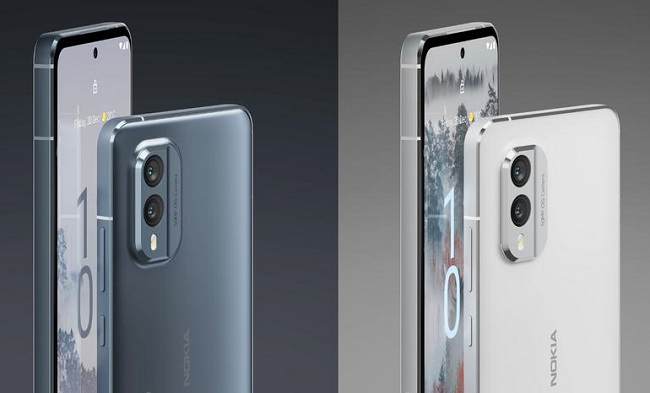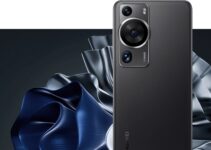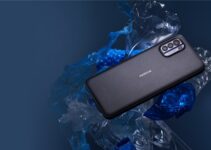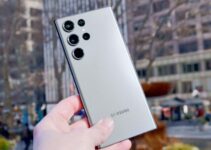Since the midst of the epidemic in 2020, HMD Global has returned with its first kinda-premium phone. Nokia’s newest product, the Nokia X30 5G, can be purchased in the United Kingdom for 400 British pounds, or around the same as similarly equipped smartphones from Google and Apple.
All You Need to Know Nokia X30 5G
After using the Nokia X30 for a week, I can say that it is a perfectly serviceable phone, but that it lacks any truly remarkable features. That’s acceptable in a bubble, but it becomes problematic at the current low prices.

Nokia X30 5G Design
A comparison between the Nokia X30 and the Nokia Lumia Icon is inevitable. A metal frame surrounds a polycarbonate screen in this phone. Time has passed, and now in the year 2022 we may discover items like a camera island on the back and a camera hole on the front of our smartphones.
The screen is slightly taller than the Pixel 7, coming in at 6.43 inches. The bezels are hardly there, and the whole thing takes up less room than it should. To dissect it further, it has superior metal banding along its entire perimeter. This, along with the polycarbonate back, is made from recycled materials.
The volume rocker and the power button (which also activates Google Assistant) are located on the right side of the device, as they always have been on Nokia phones. If you’d rather quickly power off your phone, the Assistant key may be an annoyance, but otherwise it works just well.
The Nokia X30 5G is available in Cloudy Blue and Ice White. The Ice White model is my personal preference, since it exudes a sophisticated air. If the polycarbonate back were replaced with a more quality material, this phone would have the potential to become a true flagship.
Nokia X30 5G Screen
The fingerprint reader is built into the bottom of the 6.43-inch Pure Display. It has both positive and negative aspects. The maximum brightness of the screen is sufficient for most uses. The colours are vivid and visually satisfying.
I found reading several books on the train to be a relaxing experience because the text neatly filled the entire screen. Worst part? HMD’s brightness controls aren’t the best. Auto-brightness incessantly lagged behind or failed to keep up with environmental changes.
This caused the screen to flicker and change brightness in a very startling manner, and it also led to a situation where I was in total darkness but the phone’s screen remained as bright as if the light switch were on. That happens quickly and almost imperceptibly, but when you do notice it, it’s frustrating.
Yet, the incorporation of a 90Hz display panel is not irritating. Some $1,000 smartphones even have 60Hz displays, but not all high-end manufacturers provide it. It is encouraging to see that HMD has not cut corners.
Nokia X30 5G Performance
The X30 5G from Nokia is powered by a Qualcomm Snapdragon 695. It’s a low-end Qualcomm chip that compromises in several ways, making the phone less enjoyable to use. Let’s be clear: it’s a respectable chip that can run Marvel Future Revolution and other light mobile games without getting too hot, but it’s not the best chip for a $400 phone.
While the 90Hz display is impressive, I’m constantly reminded of the processor rather than the price when scrolling and swiping around the interface. I’m not convinced of its long-term viability, especially given the delay, even if HMD claims you’ll keep this for three years.
Nokia X30 5G Camera
The Nokia X30 is the company’s first Pureview camera in years. Despite the name, this is not the Pureview from previous Lumia devices. The camera of the Nokia X30 5G is good enough for most situations. Unlike some other smartphone manufacturers, HMD didn’t choose for a cheap 2MP depth sensor.
The X30’s substitute is a competent twin camera system. The primary camera has 50 megapixels, and it’s backed up by an ultrawide lens with 12 megapixels. There’s a 16-megapixel camera up front for all your selfies, video chats, and face unlocking needs.
In the end, I found the camera to be a weak point due to the chosen processor. Everything worked alright, however I found that taking pictures and changing lenses took longer than I would have liked. The camera slows down way too much for my comfort if you snap too many photographs at once or are in a dark room.
The cameras’ performance varies. It struggles to take clear pictures in low light and often produces grainy ones. The X30’s “dark” detection threshold is lower than that of other phones, which is something I’ve noticed. As I tried to take a picture of the sunset, it automatically switched to night mode, when a Pixel 6a would not have done that.
I’ve also grown accustomed to the Pixel’s colour grading, which makes darker skin tones look better in my selfies. Most of the time, I didn’t think the front camera was very good due to the aggressive sharpening and artificial intelligence beautifying. The results you get may vary.
In general, it’s a decent camera. If you’re in a well-lit area and can hold steady (or not so steady, given the availability of top-notch image stabilisation), this camera could work for you. As the sky grows darker, cloudier, and murkier, you may find yourself longing for a brighter day. It’s a bit underwhelming for a phone bearing the Pureview moniker.
Nokia X30 5G Software and Battery
The Nokia X30 ships with Android 12 out of the box. HMD also guarantees three years of software updates, including Android 13 at some point in the future. I’ve been following Nokia’s software updates for several years, and I’ve seen as the firm has declined.
Expecting a quick release is unrealistic, but it may deliver on its promise of three years of service. I contacted HMD to acquire an estimated release date for Android 13 for the Nokia X30, but they did not get back to me in time for this article. When we get a response, we’ll add it to the story.
The phone’s software works just fine; it’s pure, unmodified Android. There aren’t any fancy widgets or a smart launcher like you’d find on a Motorola or Google device. The inclusion of Express VPN is one of the few positives I can see, but even that is easily overlooked.
The X30’s user interface is intuitive, and the system is quick and streamlined. Material You injects some much-needed colour into the operating system, and all your favourite Google Play apps and games are right here.
The 4200 mAh battery will allow you to make the most of the device’s portability. Although Nokia claims that the X30 5G may last for up to two days on a charge with typical use, I often find that at the end of a day of heavy use, the battery is dead and needs to be recharged.
The X30 has a super battery saver mode that can extend the time between charges, but it disables the always-on display and should only be used in dire circumstances. No unexpected loss of battery life meant consistent performance throughout the day.
The X30’s battery life should be fine if you don’t have the same hectic schedule as a man in his mid-20s in London. Support for 33-watt charging speeds means you can top off your battery while you shower if you realise you’re running low before you go.
The Cost And Availability of the Nokia X30 5G
The 128GB variant of the Nokia X30 5G with 6GB of RAM may be purchased through the Nokia shop in the United Kingdom for 400 pounds ($460 USD). A 256GB model with 8GB of RAM is available for 440 pounds ($511) if you need more space and speed. The latter was employed in this analysis.


